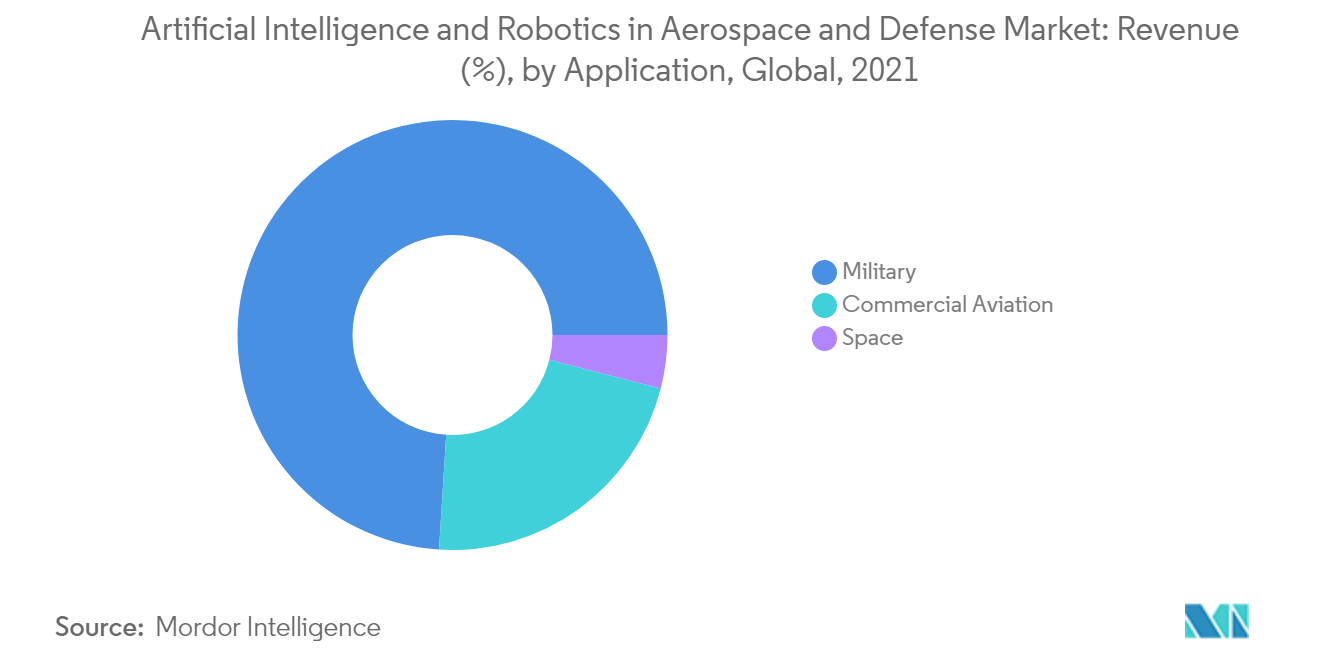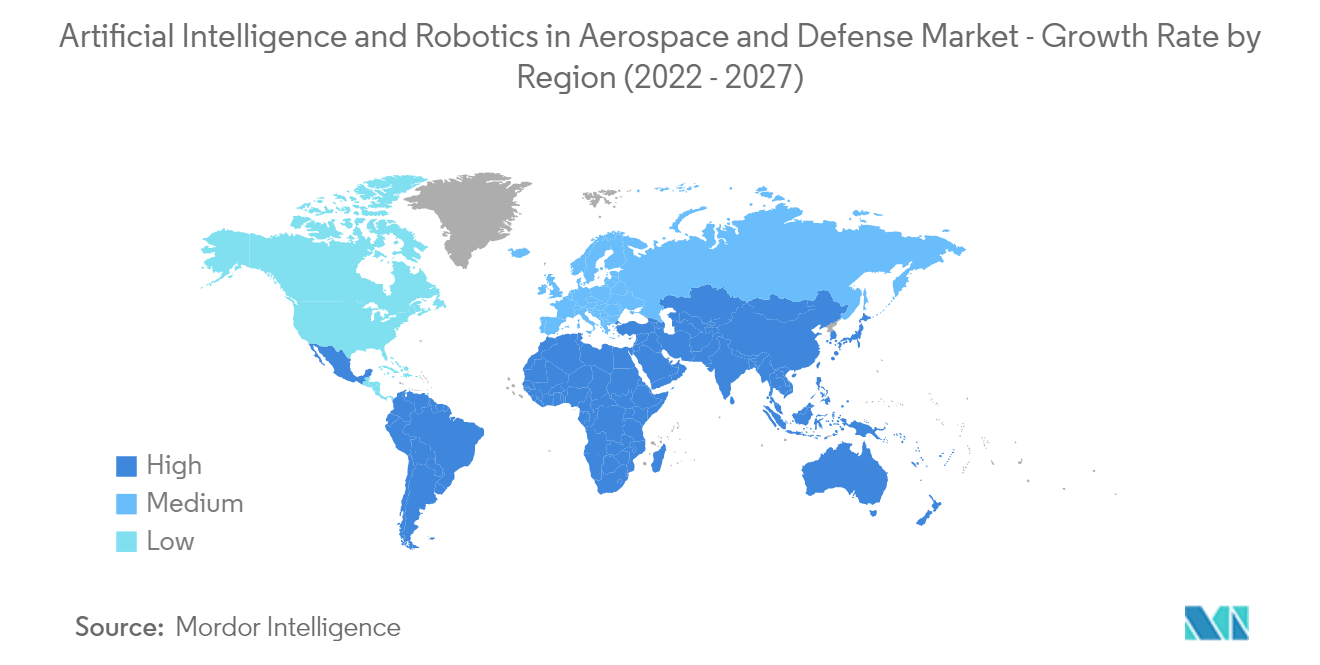Market Trends of Artificial Intelligence and Robotics in Aerospace and Defense Industry
This section covers the major market trends shaping the AI & Robotics in Aerospace & Defense Market according to our research experts:
The Military Application Segment is Expected to Dominate During the Forecast Period
The plethora of applications of AI within the military segment, such as big data analytics for better decision-making, automated logistics through the integration of unmanned ground vehicles (UGV) and unmanned aerial vehicles (UAV), bioinspired robots (swarm AI and deep neural networks), underwater mines location through neural networks, and object location are expected to promote the market growth during the forecast period. The rise in investments in the development and integration of AI and robotics and the enhanced defense budget allocation toward the R&D and acquisition of AI-based equipment are also anticipated to augment market prospects. For instance, out of 21,000 equipment contracts published by the People's Liberation Army (PLA) China in 2020, approximately 350 records were aligned to AI systems and equipment. In October 2021, NATO announced plans to launch an innovation fund worth USD 1 billion as its initial strategy to stay ahead of the competition within the AI vertical. In June 2021, Pentagon announced plans to spend USD 874 million on AI and machine learning technologies under the DOD budget 2022, signifying a Y-o-Y increase of 50% in budget allocation toward AI-based technologies. Such investments are expected to drive the growth of the military segment of the market during the forecast period.

Asia-Pacific is Expected to Witness the Highest Growth During the Forecast Period
Asia-Pacific is slated to witness the highest growth in the adoption of artificial intelligence and machine learning technologies as OEMs and operators alike are envisioned to enhance their investment in AI integration processes across the supply chain. Countries such as Japan, South Korea, and China have emerged as the leading innovators in the field of AI development and integration. Many institutes in the region are involved in research activities pertaining to advanced applications of AI in the aviation industry. Numerous aircraft and associated component manufacturing units in Asia-Pacific have witnessed steady benefits from the incorporation of AI technologies. For instance, the use of adaptive machining and cutting-edge automated inspection systems at the Pratt & Whitney facility in Singapore has caused steady growth in output volumes at the facility in recent years. China envisions to use AI technologies to strengthen the People's Liberation Army (PLA) by enabling it to engage in intelligent warfare, defined by strategists as the operationalization of AI and its enabling technologies, such as cloud computing, big data analytics, quantum information, and unmanned systems, for military applications. The PLA aims to achieve full modernization by 2035 and at par with the US military by 2050. China's New Generation Artificial Intelligence Development Plan outlines its strategy for the development of AI for defense applications such as providing support for command and decision-making, military deductions, defense equipment, and other applications. Such developments are anticipated to have a profound positive effect on the market in focus during the forecast period.


